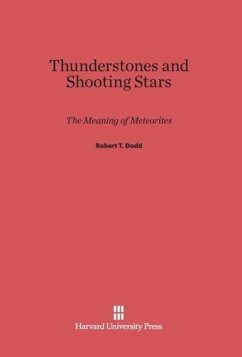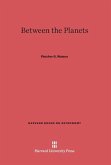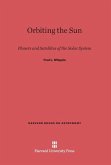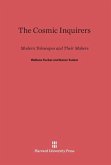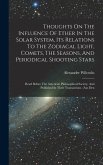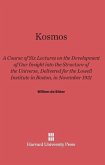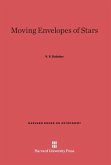A streak of light crosses the night sky as a bit of extraterrestrial material falls to Earth.
Meteorites, which range from particles of dust to massive chunks of metal and rock, bombard the Earth constantly, adding hundreds of tons of new material to our planet each day. What are these objects? How do we recover and study them? Where do they come from, and what do they tell us about the birth and infancy of the solar system? Why do many scientists now believe that meteorites have played a dramatic, albeit occasional, role in the evolution of life on Earth?
In Thunderstones and Shooting Stars, Robert T. Dodd gives us an up-to-date report on these questions. He summarizes the evidence that leads scientists to believe that most meteorites come from asteroids, although a few come from the moon and a few more from a planet, probably Mars. He explains how chondrites--the most numerous and primitive of meteorites--contribute to our evolving picture of the early solar system, and how some of them may tell us of events that took place beyond the sun and before its birth. Finally, he examines the controversial hypothesis that impacts by asteroids or comets have interrupted the evolution of life on Earth, accounting for such geological puzzles as the rapid demise of the dinosaurs.
Meteorites have been called "the poor man's space probe," for they are the only extraterrestrial rocks that we can collect without benefit of spacecraft. This lively and accessible book both illuminates the complex science of meteoritics and conveys a sense of its excitement. University teachers and students will appreciate its synthesis of new research on a broad range of topics, and amateurs will delight in its lucid presentation of a science that is unlocking many mysteries of Earth and space.
Meteorites, which range from particles of dust to massive chunks of metal and rock, bombard the Earth constantly, adding hundreds of tons of new material to our planet each day. What are these objects? How do we recover and study them? Where do they come from, and what do they tell us about the birth and infancy of the solar system? Why do many scientists now believe that meteorites have played a dramatic, albeit occasional, role in the evolution of life on Earth?
In Thunderstones and Shooting Stars, Robert T. Dodd gives us an up-to-date report on these questions. He summarizes the evidence that leads scientists to believe that most meteorites come from asteroids, although a few come from the moon and a few more from a planet, probably Mars. He explains how chondrites--the most numerous and primitive of meteorites--contribute to our evolving picture of the early solar system, and how some of them may tell us of events that took place beyond the sun and before its birth. Finally, he examines the controversial hypothesis that impacts by asteroids or comets have interrupted the evolution of life on Earth, accounting for such geological puzzles as the rapid demise of the dinosaurs.
Meteorites have been called "the poor man's space probe," for they are the only extraterrestrial rocks that we can collect without benefit of spacecraft. This lively and accessible book both illuminates the complex science of meteoritics and conveys a sense of its excitement. University teachers and students will appreciate its synthesis of new research on a broad range of topics, and amateurs will delight in its lucid presentation of a science that is unlocking many mysteries of Earth and space.
A friendly, easy-going, but nevertheless highly systematic, amble through current meteorite studies and theories...The text is a delight, and the audience for which it is intended--informed laypeople and junior undergraduates--will find it anything but intimidating...Dodd's book is a masterpiece.
I cannot think of any important aspect of meteoritics that is neglected in the book's well-balanced coverage...The up-to-date treatment provides satisfying discussion of the newest developments...THe quality of writing is excellent. The text is informal and very readable...I enthusiastically recommend Thunderstones and Shooting Stars to anyone who wants to know about meteorites.
An in-depth account of the history, composition, environment, and motion of various types of meteorites...This easily readable and up-to-date book contains instructions which will enable the reader to identify and classify many celestial rocks...Readers of Thunderstones and Shooting Stars will turn pages with anticipation and wonder. Inspiring an interest in meteorites and their terrestrial consequences, the book will leave an individual with an eager curiosity and a sense of awe.
I cannot think of any important aspect of meteoritics that is neglected in the book's well-balanced coverage...The up-to-date treatment provides satisfying discussion of the newest developments...THe quality of writing is excellent. The text is informal and very readable...I enthusiastically recommend Thunderstones and Shooting Stars to anyone who wants to know about meteorites.
An in-depth account of the history, composition, environment, and motion of various types of meteorites...This easily readable and up-to-date book contains instructions which will enable the reader to identify and classify many celestial rocks...Readers of Thunderstones and Shooting Stars will turn pages with anticipation and wonder. Inspiring an interest in meteorites and their terrestrial consequences, the book will leave an individual with an eager curiosity and a sense of awe.

